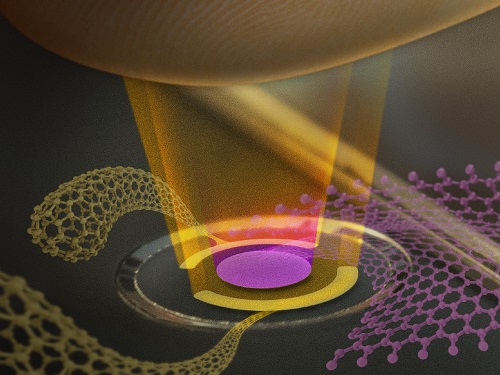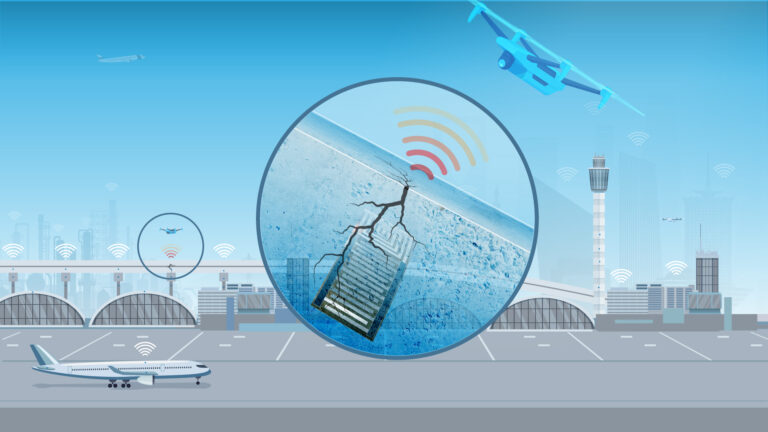Mechanical Engineering
Augmented reality at your fingertips
A flexible, carbon-based device that responds to humidity in two ways can sense 3D objects without touching them.


A flexible logic sensor made from carbon nanotubes and graphene oxide films can sense humid objects without touching them.
© KAUST Ivan Gromicho
The intuitive touch screens integral to smartphones caused a sensation when first released, and they remain popular for many consumer electronics. Now, a team from KAUST has found a way to take these input devices into three dimensions with a sensor that tracks the position and speed of human fingers in free space1.
Thin films made from carbon nanotubes or graphene oxides have electrical properties that are highly sensitive to humidity. Both substances absorb water molecules and transform them into charged hydronium ions (H3O+) that modify thin film conductivity in reversible, repeatable ways. They do this at faster speeds than traditional humidity sensors. The direction of conductivity change, however, depends on the nanomaterial—graphene oxide tends toward higher conductivity with H3O+additions, while nanotubes become more resistive.
Dr. Yanlong Tai and Professor Gilles Lubineau realized that a combination of these tiny nanomaterials could be used to power a recognition system based on gestures rather than touch. “These 3D noncontact sensors,” explained Tai, “require generation of three different signals during a one-time measurement.” The duo envisioned that an appropriate mix of nanotubes and graphene oxides would give triple response patterns—positive-negative-negative, for example, to the natural humidity surrounding a fingertip.
However, to achieve sufficient signal resolution to process a finger’s 3D position, they needed clearer insight into the contradictory response of nanotubes and graphene oxide to humidity. According to Lubineau, absorbed H3O+ ions induce mechanical stress inside the nanomaterials that alters the material’s bulk conductivity and the junction conductivity between individual nanoparticles.
“Both films rely on the same two mechanisms, but the balance between them is totally different,” said Lubineau. “A key challenge was to be able to correctly separate the physics of each effect in the different microstructures.”
By experimenting with sensors containing different microstructure layouts, the team deduced that a net model, where conductivity follows a grid-like system of intercrossed pathways, could explain the humidity-induced resistance of nanotube films. Graphene oxide, on the other hand, was best represented by an overlapping scale design that introduced favorable capacitive effects in the presence of H3O+.
The researchers used this knowledge to fabricate a flexible, transparent device that measures the distance, speed and direction of a fingertip placed above it. This prototype also worked with vapor from human breath, and it is poised to make gesture sensing a part of digital input interfaces.
“It’s usually hard to make noncontact sensors operate with different moisture levels,” said Lubineau. “Our findings here may promote their use in augmented reality setups.”
References
- Tai, Y. & Lubineau, G. Human-finger electronics based on opposing humidity-resistance responses in carbon nanofilms. Small 1603486 (2017).| article
You might also like

Mechanical Engineering
Innovative strain sensor design enables extreme sensitivity

Mechanical Engineering
Turbulent flow shows surprise patterns that could help boost efficiency

Mechanical Engineering
Machine learning model identifies gas molecules

Mechanical Engineering
Making a splash: unraveling the impact of large water droplets

Mechanical Engineering
Sour gas has sweet potential for hydrogen production

Mechanical Engineering
Dancing droplets’ new spin on water harvesting

Mechanical Engineering
Underwater air pockets smooth out the bumps

Chemistry



